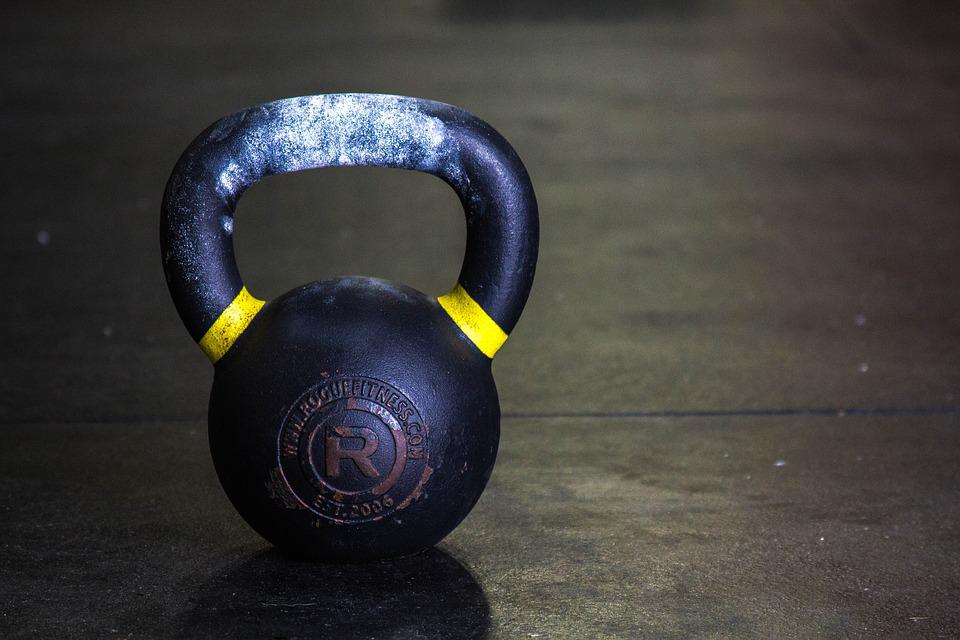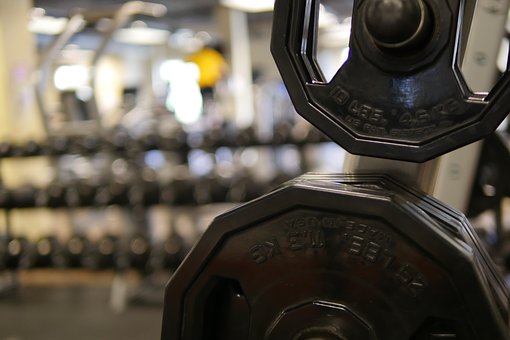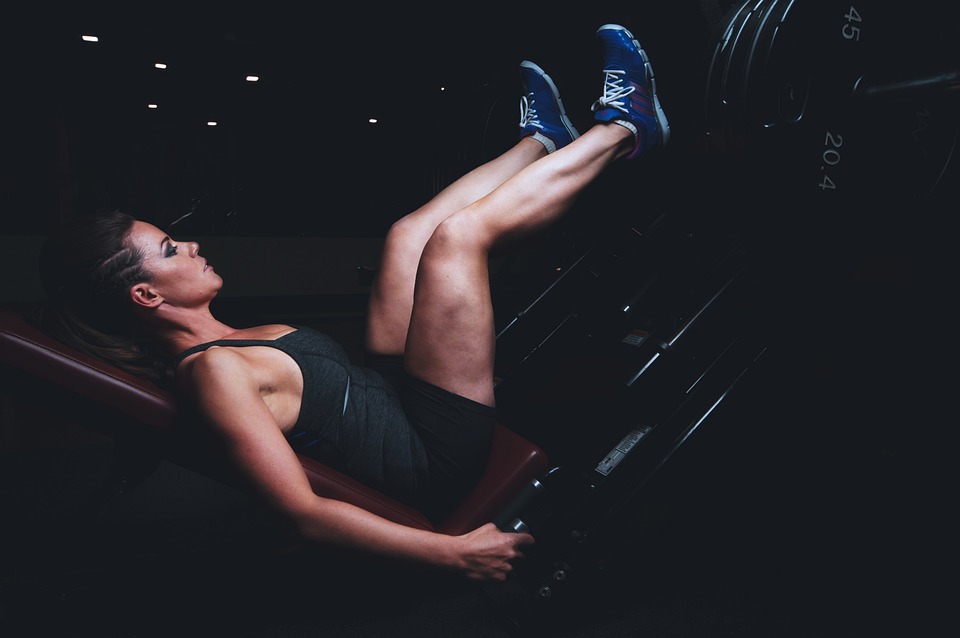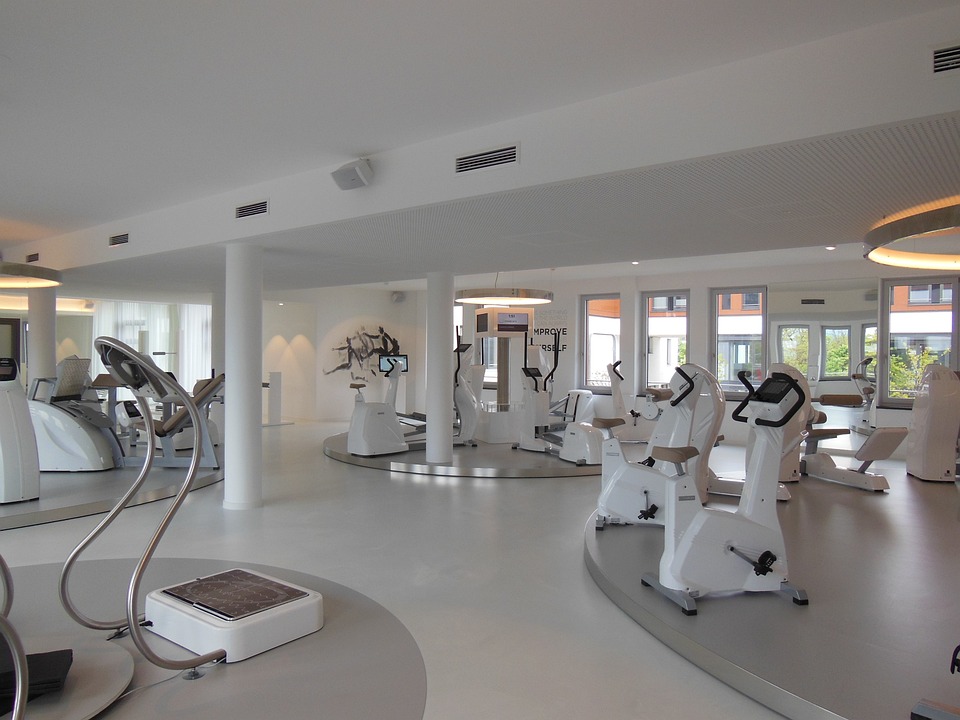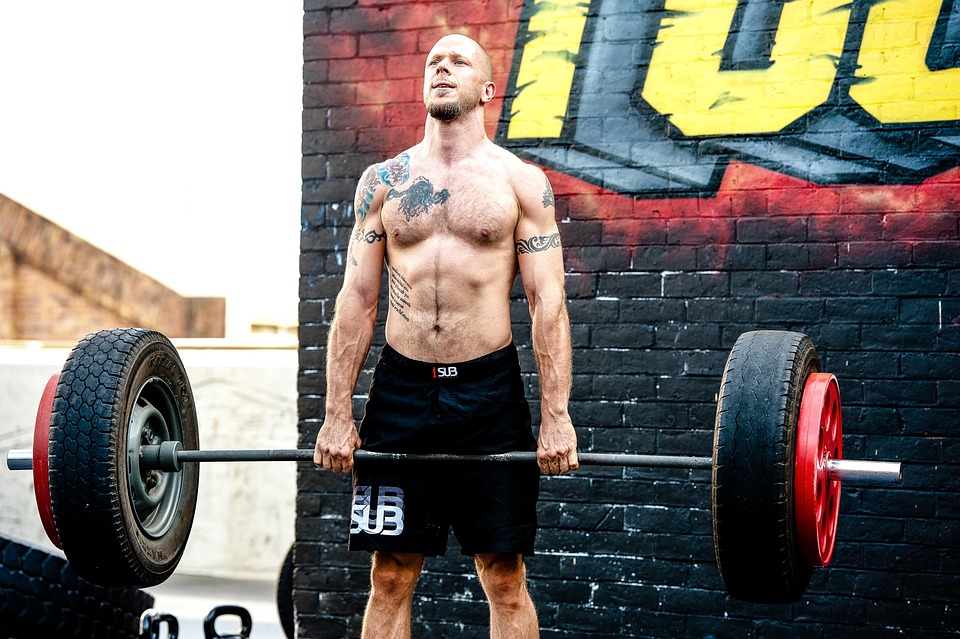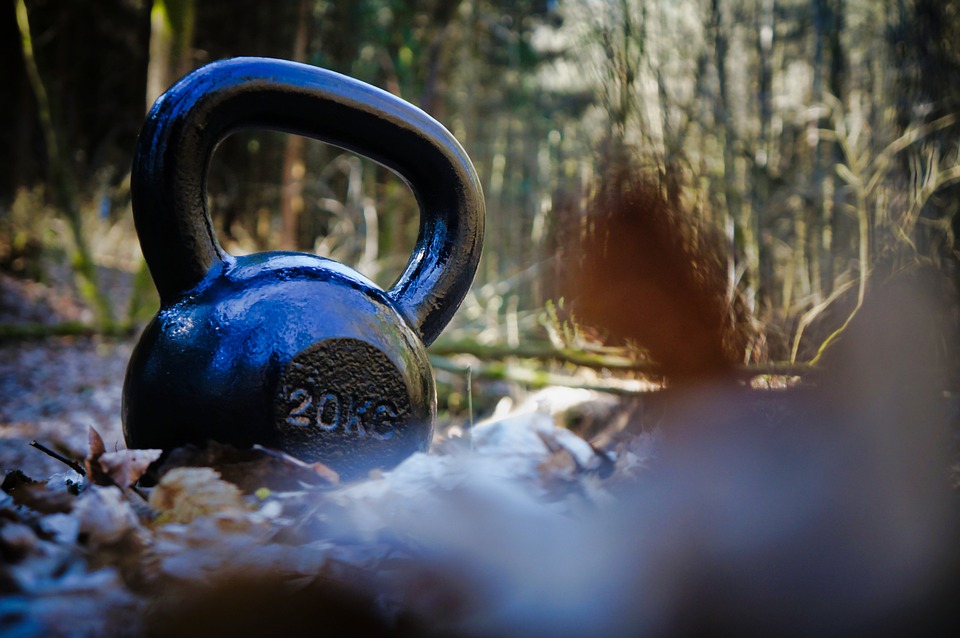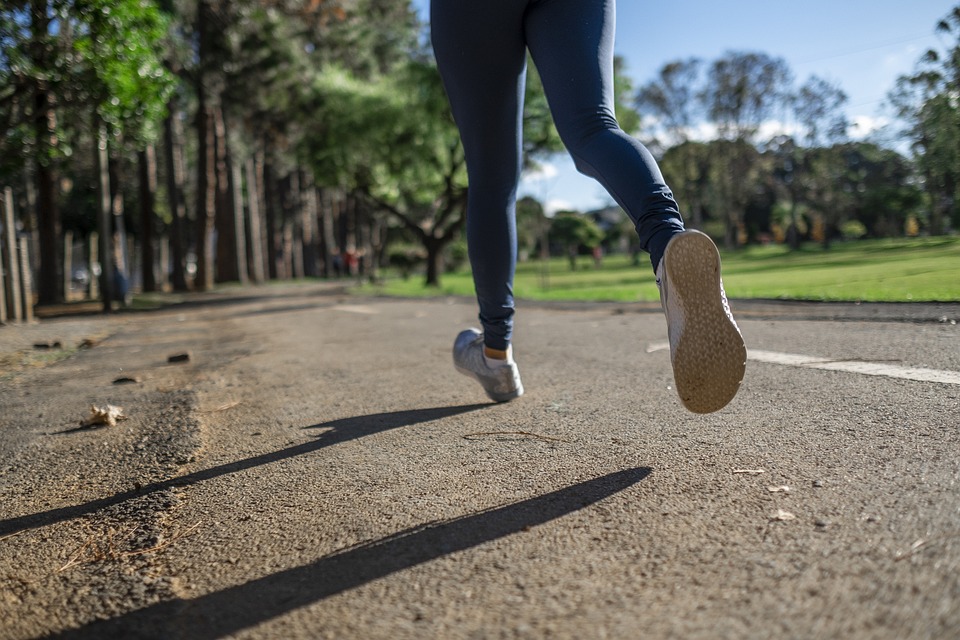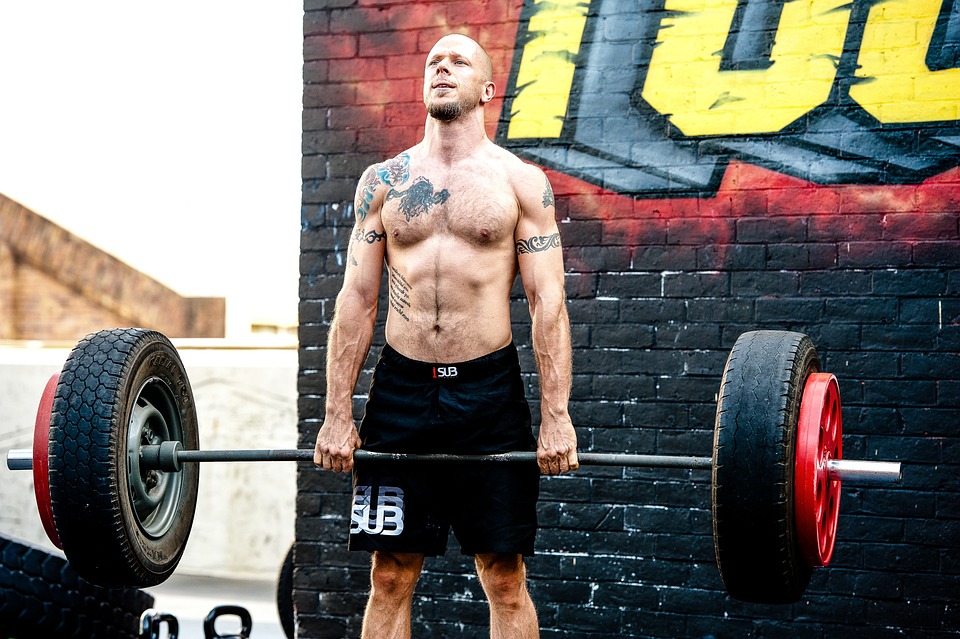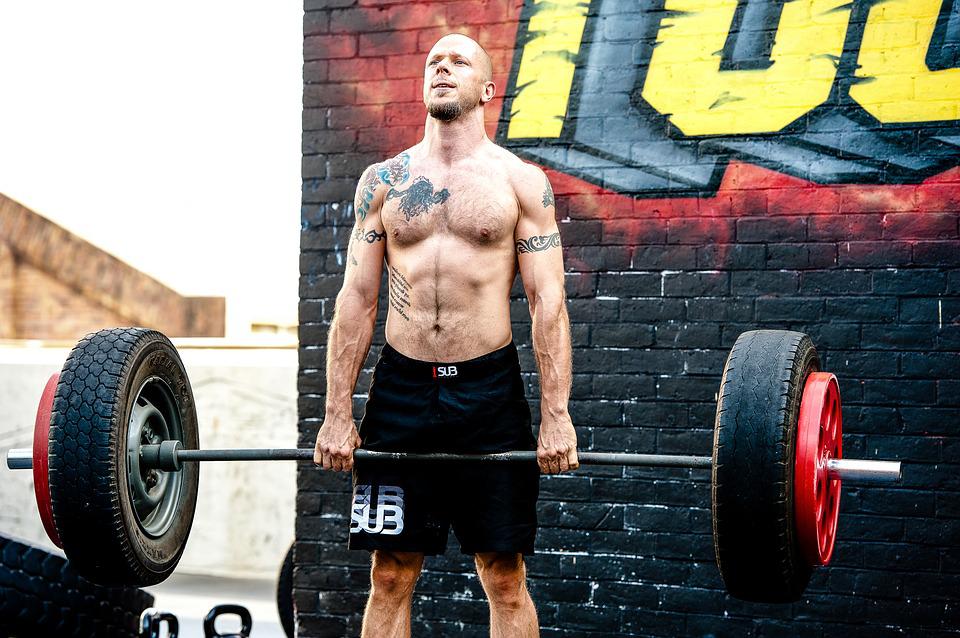
And when the bar does leave the floor, the challenge isn’t over—far from it, in fact. Some lifters find the deadlift to be a raw test of physical and mental strength because it is black and white – either the bar leaves the floor or it doesn’t. And when the bar does leave the floor, the challenge is far from over.
The deadlift is an excellent exercise for targeting multiple muscle groups including the hamstrings, quadriceps, glutes, calves, core, and back. It is also great for building muscle mass and increasing your strength.
This article provides an overview of some useful tips to help you improve your deadlift performance.
Centre the bar before you deadlift
To achieve your biggest deadlift, keep the bar close to your body to travel the shortest distance..
If the bar is not in the center line, it will be harder to lift. The barbell should be in the center of the foot on set up.
Most people’s mistake is putting the bar in the middle of the forefoot rather than the middle of the whole foot. The bar should bisect the arches of the feet. When set up correctly, your shins will be very close to the bar, perhaps only an inch or two away before you bend to grab it.
Improve your grip before you deadlift
If one part of the chain is weak, it will stop the whole process, and that part is usually the grip. The stronger your grip is, the stronger your lift will be. If you are not confident in your grip, your nervous system will not use all the available muscle mass.
One method to determine if your grip is preventing you from successfully completing a deadlift is to use lifting straps. If you are able to lift a weight that you have failed to lift before with the use of straps, then you know that it is not your overall strength that was the issue, but rather your grip.
Pin the bar to you before you deadlift
You should never have a “hitch” in your deadlift, but you should keep the bar close to your body throughout the movement. This may cause the occasional scrape on your shins.
The further the bar is from your body, the more forces are placed on your lower back, making it more likely that you will miss the lift.
Doing repetitions with bad form will cause your back to round and put stress on your spine.
Get low to the floor before you deadlift
Take those spongey running shoes off.
If you have soft-soled trainers on while you lift, you will increase the weight of your deadlift by taking them off: This is for three reasons.
The first reason is that you won’t have to move the weight as far. Some trainers might add two or three centimeters of height that you now need to move the weight over. It might not sound like much, but it can make a difference.
The second reason trainers will hinder your lifting is because they absorb some of your force. Trainers are designed to be soft in order to absorb the forces of activities such as running, and this same quality also reduces your power when lifting. Imagine trying to jump in the air while standing in deep sand – you wouldn’t jump as high because of the soft surface under your foot. Running trainers have a similar effect on lifting.
The third reason to wear shoes with hard soles while lifting weights is stability. If your weight is not evenly distributed on your foot, the soft sole of the shoe will collapse in that area, leaving you off balance. Having an unstable base while lifting weights will cause you to lift less weight.
The best dead lifters generally go barefoot or wear trainers with very low, flat soles because they offer more stability and prevent the feet from slipping.
Nail your deadlift set-up
Depending on how flexible your hips are and how tall you are, you will need to set up your deadlift in a way that allows you to reach the bar with a neutral spine. A neutral spine means that your spine is in line with your head and tailbone, like a broomstick.
If you are having trouble keeping your spine neutral while deadlifting, try changing your stance. A conventional deadlift stance (feet hip-distance apart) is the best way to keep your spine neutral. If that doesn’t work, try taking your feet slightly wider apart. If you still can’t keep your spine neutral, try a semi-sumo stance.
Blocks can be used to raise the bar in all deadlift variations so you can maintain a neutral spine.
Dead stop your deadlift
It’s tempting to make the bar bounce when lifting it during deadlifts, but it’s better in the long run to put the weight down and reset your position. This helps with practicing your set-up and also eliminates weaknesses from the floor. If you make the weight bounce when lifting it, you’ll limit your deadlift significantly.
If youreset the barbell after each rep, you will be able to practice keeping your body tight and pulling the barbell taut before lifting.
Heavier deadlifts are not always better
You need to put in the hard work to practice and make corrections as you go. In order to perfect your technique when deadlifting, you need to practice regularly. Simply being aware of the tips below won’t be enough – you need to put in the effort to practice regularly and make adjustments as needed. Remember, the saying goes that “practice doesn’t make perfect – perfect practice makes perfect.”
Are you going to be able to maintain perfect technique when performing extremely heavy reps?
If you want to increase your strength, you should lift weights that are above 70% of your one-rep max. For example, if your one-rep max for deadlifts is 140kg, then you will continue to build strength by doing reps with weights that are 98kg and above. The benefit of using lower weights is that your technique will look better.
You will get tired more quickly when doing a lot of repetitions of a deadlift, even if the weight is not very heavy. It is better to do fewer repetitions using a lighter weight, and to stop before your technique starts to get bad.
If you are new to lifting weights, you will benefit from more practice.
Film your deadlift sets
We have all seen someone doing deadlifts that look terrible and just cringed. Our deadlifts would never look like that, right? You might be surprised.
If you want to change something, you must measure it. This means that you should be tracking the sets, reps, and weight lifted for your workout. However, just recording the reps doesn’t give you an accurate measure of how those reps looked.
If you improve your technique, you will be able to lift more weight. Film your lifts to see your technique improve over time.
One benefit of filming your lifts is that it makes it easier to identify which areas you need to work on. Another benefit is that it can help you determine which part of your form is collapsing and needs further work.
When filming your lifts, be sure to position the camera at a perpendicular angle. This will allow you to more easily identify any form errors. Filming at a 45-degree angle or with the camera positioned too high or too low can distort your lifts, making it more difficult to assess your form.
Never, ever pull with a rounded back
You will incur high costs if you make this mistake, especially if you are a heavy lifter. The negative effects of rounding your back will not be immediately apparent, but they will become evident over time.
Try to keep your back straight and in a neutral position, using your leg muscles to help lift the weight before your hips and upper body finish the movement. Some people mistakenly try to lift with their backs, because they don’t know how to use their legs properly, which needs to be corrected.
It’s fine to have a very slightly rounded upper back when lifting weights, as it will help you to lift more. However, don’t overdo it, as this should only be a minor change.
The spine is important for upright posture, but it is not designed to bear heavy loads when not supported.
It is important to always check your form and/or have someone help you so that you can avoid injury.
Stop deadlifting and instead do the rack pull below the knees
We all have to face reality at some point in time, and by that we mean that not everyone is cut out for deadlifts, just like not everyone is cut out for squats.
Some people and body types can’t lower themselves enough to do a deadlift with a neutral spine, so the solution is to set the bar higher.
The rack pull is a great movement that is quite similar to the deadlift. However, instead of having the bar above the knees like a lot of people do for the rack pull, we will keep it below the knees.
This will enable you to deadlift heavy while using a good range of motion and discouraging bad form, whereas the standard rack pull can be dangerous if not done correctly.
Many people mistakenly believe that they can simply load the bar and pull with mostly their back muscles, since the legs are not as involved. However, this can lead to thoracic outlet syndrome, which can be caused by incorrect lifting posture and even lead to shoulder problems. It also puts dangerous pressure on veins, nerves and arteries.
Thoracic extension and scapular retraction are both important.
Maximize the overhand grip
In other words, we recommend using an overhand grip because it’s more likely to prevent injuries and help you lift evenly.
The mixed grip is a popular grip used by weightlifters because it allows them to lift more weight than other grips by preventing the bar from slipping. There is nothing wrong with using this grip as long as the weightlifter knows what they are doing.
An overhand grip is better for joint positioning and grip strength, which are both important for lifting weights effectively.
A double-pronated grip is when your palms face your thighs during the deadlift, while a mixed grip is when one palm faces your thighs and the other faces away. One study showed that a double-pronated grip results in less asymmetry during the deadlift when compared to a mixed grip.
The text is discussing the benefits of using an over/underhand grip during the deadlift, specifically how it results in increased bilateral symmetry in the muscles around the arms.
If you use a mixed grip while weightlifting, make sure to switch up the position of each arm (underhand or overhand) each time you train. This will help avoid muscle imbalance. Another option is to avoid using a mixed grip altogether to prevent asymmetrical training.
Don’t go too deep
You should not go as deep when deadlifting as you would when squatting because you are trying to lift a lot of weight and you will get more power from your legs when they are positioned above parallel.
Most people who are trying to deadlift heavy loads want to do it as efficiently as possible, so they don’t get so deep that it’s hard to get back out. You can dip down low and lift back up before you start the main lift, but many people find it easier to stay in a position where they’re strongest.
Proper breathing is important for your deadlift
A proper breathing technique is important for the deadlift as it requires a lot of intra-abdominal pressure and stability.
An abdominal brace creates pressure within the abdominal cavity in order to make the area more solid and difficult to break.
So, how do we do this?
Breathe in slowly and deeply, letting your rib cage expand and your diaphragm push down. Exhale slowly, letting your rib cage fall and your diaphragm rise. Practice this deep breathing by lying down on your back and taking long, deep breaths.
Do this exercise three to four times, making each repetition bigger and deeper. On the last repetition, breathe in as deeply as possible and then hold for five to ten seconds. That is your brace for the main lifts.
If you are bracing effectively, you should feel like you’ve worked hard after performing a set!
Fix those caving knees when you deadlift
If you find that your knees cave in and fall inwards when you perform a deadlift (knee valgus), you can try making your stance narrower, if you have the range at your hip and ankle to allow this. Focus on applying pressure on the outside of your feet, and ‘spread the floor’ when you lift. It is important to address your knees caving in, and align the knee and ankle joints to prevent injuring your knee.
When lifting the weight up, do not lock your knees at the top.

